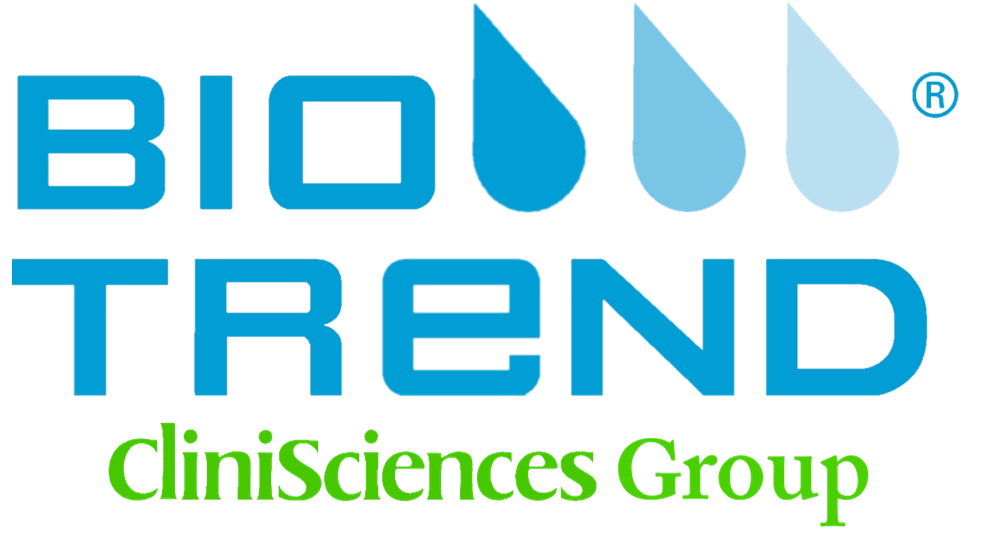CD115, Recombinant, Human, Fc Chimera (c-fms, Fms, CSF-1R, M-CSFR)
Cat# C2447-52E-100ug
Size : 100ug
Brand : US Biological
C2447-52E CD115, Recombinant, Human, Fc Chimera (c-fms, Fms, CSF-1R, M-CSFR)
Clone Type
PolyclonalGrade
Highly PurifiedAccession #
CAA27300Shipping Temp
Blue IceStorage Temp
-20°CCD115 is also known as c-fms, marcophage colony stimulating factor receptor, or CSF-1R. It exists in immature (gp130 c-fms) and mature (gp150 c-fms) forms. CSF-1R exhibits an intrinsic tyrosine-specific protein kinase activity. It is expressed on the cells of the mononuclear phagocyte lineage. CSF-1R is an integral transmembrane glycoprotein consisting of a 512 amino acid extracellular domain that includes the CSF-1 binding site, a single 25 amino acid membrane-spanning segment, and a 435 amino acid cytoplasmic portion that includes the tyrosine kinase domain.||A DNA sequence encoding the extracellular domain of human M-CSF R (c-fms) (aa residue 1-512) (Coussens, L. et al., 1986, Nature 320:277-280) was fused to the carboxy-terminal 6X histidine tagged Fc region of human IgG1 via a ploypeptide linker. The chimeric protein was expressed in a mouse myeloma cell line, NSO. Recombinant human M-CSF R/Fc chimera is a disulfide-linked homodimer. Each monomeric subunit, generated after the removal of a 19 residue signal peptide, contains 737 amino acid residues with a calculated molecular mass of 81kD. As a result of glycosylation, the monomeric subunits migrate as an approximately 150kD protein in SDS-PAGE under reducing conditions.||Human Macrophage Colony Stimulating Factor R/Fc Chimera M-CSF receptor, the product of the c-fms proto-oncogene, is a member of the type III subfamily of receptor tyrosine kinases that|also includes Flt-3, the receptor for SCF, and the a and b receptors for PDGF. These receptors are characterized by the presence of five immunoglobulin-like domains in their extracellular region and a split kinase domain in their intracellular region. M-CSF binding induces receptor homodimerization, resulting in transphosphorylation of specific cytoplasmic tyrosine residues and signal transduction. The c-fms proto-oncogene has been mapped to chromosome 5 at band 5q33.3, in close proximity to the gene for the PDGF b receptor. M-CSF receptor is expressed primarily on cells of the monocyte/macrophage lineage and in various tissues of|the developing placenta Human M-CSF receptor cDNA encodes a 972 amino acid residue type I membrane protein with a 23 aa residue putative signal peptide, a 489 aa residue extracellular region containing the ligand-binding domain, a 25 aa residue transmembrane domain and a|435 aa residue cytoplasmic domain. Activators of protein kinase C has been shown to induce the proteolytic cleavage of M-CSF receptor from the cell surface, resulting in the release of the functional ligand-binding extracellular domain. Recombinant soluble M-CSF R/Fc chimera binds M-CSF with high affinity and is a potent M-CSF antagonist (Sherr, C.J. 1990, Blood 75:1-12; Hamilton, J.A., 1997, J. Leukoc. Biol. 62:145-155).||Mouse myeloma cell line, NS0-derived recombinant protein corresponding to human M-CSF R (Ile20-Glu512), DIEGRMD, human IgG1 (Pro100-Lys330), 6His-Tag||Activity: |Measured by its ability to inhibit the M-CSF induced proliferation of NFS-60 mouse myelogenous leukemia lymphoblast cells. The ED50 for this effect is typically 0.004-0.012ug/ml in the presence of 1ng/ml of rhM-CSF.||Storage and Stability: |Lyophilized powder may be stored at -20°C. Stable for 12 months after receipt at -20°C. Reconstitute with sterile PBS, 0.1% HSA or BSA. Aliquot to avoid repeated freezing and thawing. Store at -20°C. Reconstituted product is stable for 6 months at -20°C. For maximum recovery of product, centrifuge the original vial after thawing and prior to removing the cap. Further dilutions can be made in assay buffer.



